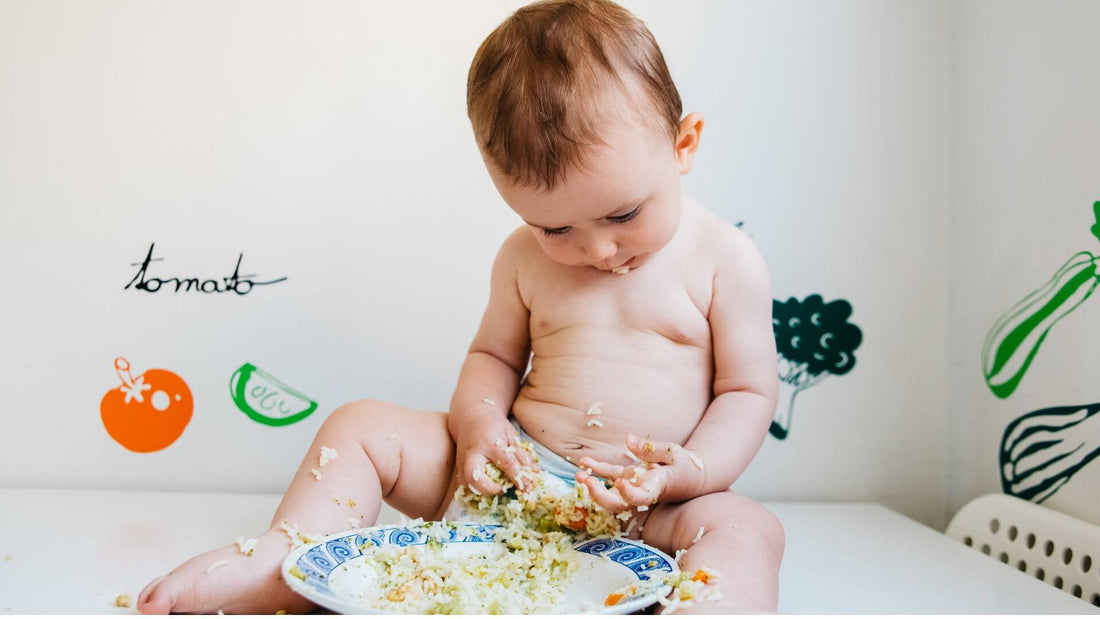How to Manage Breastfeeding and Weaning: A Practical Guide
Introduction
How to manage breastfeeding and weaning?: this question allows us to open a very important parenthesis.
Nowadays, unfortunately, there is still a tendency to believe that, with the introduction of the first solid foods, the baby no longer needs milk.
This is not the case and, as we will see later, the scientific guidelines say something completely different.
To delve deeper into the topic, I have therefore created this content, the information of which, if you wish, can be completed with that contained in the video course “Practical, easy and stress-free self-weaning” curated by Doctor Federica Dell'Oro, the nutrition biologist of the DrSilva Parent Academy.
If you want to discover useful tips on how to accompany your little one in his motor development with the right stimuli and on how to prevent problems such as plagiocephaly, you can take a look at the Instagram profile @drsilva.com_official .
Weaning and breastfeeding on demand: two worlds that can coexist
Many mothers wonder how to manage breastfeeding and weaning, worried at the thought of having to interrupt the first.
It is not absolutely necessary: breastfeeding and weaning can and should coexist in the early stages.
As previously mentioned, we are reminded of this first of all by the WHO guidelines , which indicate breast milk - or formula milk in cases where breastfeeding is not possible - as the priority choice at least for the first two years of life.
Solid foods do not replace the nutrients taken in through breastfeeding, but rather complement the caloric intake provided by it.
It is no coincidence that the truly correct expression to use is neither weaning nor self-weaning, but rather “complementary feeding on demand”.
To better understand the importance of continuing breastfeeding even when the baby begins to approach the first solid foods, it is important to remember that the first times are all about discovery.
As I specified in this guide dedicated to baby-led weaning , there is no need to worry if, at the beginning of the process in question, the child should only eat one fusilli (and manipulate it in his mouth for a long time).
Getting familiar with the consistency and chewing of solid food is like going to the gym for an adult.
The first tastes, by necessity, cannot ignore milk, which must be offered always taking into account the requests of the little one, who is perfectly capable of self-regulation.

How many feeds per day during weaning and when to propose them?
One aspect to explore when talking about how to manage breastfeeding and weaning concerns the ideal amount of daily feedings.
There are no stringent indications in this regard.
As mentioned at the end of the previous paragraph, it is necessary to consider the on-demand breastfeeding approach as a point of reference and to keep in mind the fact that the meal never replaces the breastfeeding (this happens, instead, in traditional weaning).
In this video , Doctor Maria Chiara Alvisi, midwife of the DrSilva team , underlines another point of utmost importance: listening to the baby's signals.
If the baby is placed at the table without the pre-meal feed and appears agitated, it is a good idea to offer him the breast first, so as to place him at the table well-disposed to experiment with that extraordinary new world that is solid foods.
In cases where, however, the puppy tends to fall asleep after feeding, it is better to give it to him after a meal with solid foods.
I would like to dedicate a little focus to night feedings.
Again, there are no hard and fast guidelines to follow when learning how to manage breastfeeding and weaning.
Everything, I repeat, must be based on the child's requests.
The fact that some newborns , once they have started on- demand complementary feeding , tend to wake up more often at night should not alarm us and make us think that the milk is no longer sufficient .
Let's never forget, in fact, that 70% of children between 6 and 18 months wake up, on average, 1 to 3 times a night .

